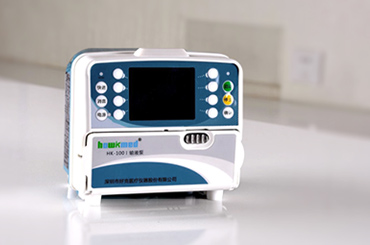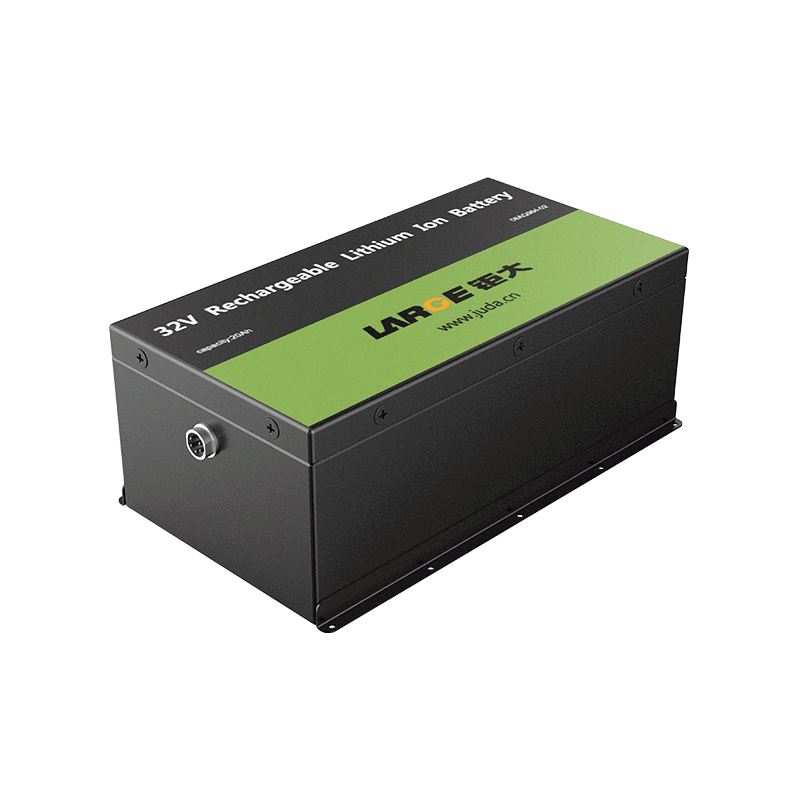-
Key Takeaways
-
Part 1: Overview of Rugged Tablets+
- 1.1 What is the Rugged Tablet
- 1.2 Application Scenarios of Rugged Tablet
-
Part 2: Durability and Design of Lithium Batteries for Rugged Applications+
- 2.1 Structural Durability of Lithium Batteries
- 2.2 Temperature Resilience for Rugged Tablet Lithium Battery
- 2.3 Extended Lifespan about Lithium Batteries
-
Part 3: Making the Right Choice for Key Certification Selection+
- 3.1 Identify the Application Scenario about Rugged Tablet Lithium Battery Certification Selection
- 3.2 Certification by Target Market about Rugged Tablet
- 3.3 Certification by Battery Type
-
Part 4: Tips for Maintaining Rugged Tablet Lithium Battery Longevity+
- 4.1 Best Practices for Charging and Discharging
- 4.2 Storing Batteries Safely
- 4.3 Recognizing When to Replace the Battery
-
FAQ+
- 1. How do you know if a lithium battery is compatibility with your rugged tablet?
- 2. Can you use third-party lithium batteries for correct type and size rugged tablets?
- 3. What is the average lifespan of a lithium battery in rugged tablets?
How to Choose the Best Lithium Battery for Your Rugged Tablet
APR 16, 2025 Pageview:54

Choosing the appropriate Tablet lithium battery is essential for your rugged tablet. Selecting the right battery ensures it works seamlessly with your device, boosts durability, and meets necessary voltage requirements. This decision for rugged tablets must prioritize high safety, environmental adaptability, long endurance, and stability under extreme conditions to meet the stringent demands of industrial, outdoor, military, and other specialized scenarios. Additionally, certifications and compliance play a key role in ensuring safety, prolonging the lifespan of your rugged tablet, and maintaining its efficiency.
Key Takeaways
Choose a suitable and safe lithium battery according to the requirements of your tablet's working environment.
Focus on safety by choosing batteries with certifications like FCC and IP ratings. These prove the battery is safe to use and transport.
Use proper charging and storage habits for your battery. Don’t let it fully drain, keep it charged between 20% and 80%, and store it in cool places to make it last longer.

Part 1: Overview of Rugged Tablets
1.1 What is the Rugged Tablet
A rugged tablet is a specialized mobile device designed to operate reliably in harsh environments. Unlike standard tablets, rugged tablets feature enhanced durability, environmental resistance, and military-grade protection. These devices are built to withstand physical abuse, such as drops, vibrations, and extreme temperatures, making them ideal for demanding industries.
1.2 Application Scenarios of Rugged Tablet
A German automotive plant reduced production line downtime by 35% after adopting ATEX-certified batteries. The Antarctic Zhongshan Station utilized Getac F110 tablets with LiFePO₄ batteries, achieving 14 hours of continuous operation at -40°C. Below is a summary of core application scenarios for rugged tablets across diverse environments, highlighting their functional adaptations and industry-specific solutions to environmental challenges:
Industrial Manufacturing Environment Challenges: High temperature, dust, vibration, electromagnetic interference
Visual Quality Inspection: IP65 dust/water jet resistance.
AGV Fleet Control: EMI-shielded design.
Outdoor & Extreme Climates Environment Challenges: Freezing temperatures, heavy rain, glare, humidity
Geological Survey: RTK GPS centimeter-level positioning with -30°C cold start.
Forest Fire Prevention: Survive rain, dust, and vibrations during off-road transport.
Hazardous & Explosive Environment Challenges: Flammable gases, explosive dust
Oil/Gas Field Inspections: high explosive risk.
Mining Operations: high-dust, high-vibration, explosive atmospheres.

Part 2: Durability and Design of Lithium Batteries for Rugged Applications
Lithium batteries in rugged devices must balance high energy density, extreme environment adaptability, and long-term reliability. Their design focuses on overcoming challenges like mechanical stress, temperature extremes, and safety risks.
2.1 Structural Durability of Lithium Batteries
Impact Resistance
Shock-Absorbing Materials: batteries are encased in silicone/rubber padding and secured with honeycomb-structured brackets to withstand drops (up to 6 ft) and vibrations (per MIL-STD-810H).
Reinforced Housing: Aluminum alloy or polycarbonate shells with IP68/IP69K ratings prevent water, dust, and chemical ingress.
Short-Circuit Prevention
Ceramic separators and flame-retardant coatings isolate cells, while pressure relief vents mitigate thermal runaway risks.
2.2 Temperature Resilience for Rugged Tablet Lithium Battery
Wide-Temperature Operation:
Chemistry Choice:
LiFePO₄ (Lithium Iron Phosphate):
Operating Range: -30°C to 60°C (UL 1973 certified).
Case Study: Norwegian offshore rigs achieved 16-hour runtime at -25°C (Source: Offshore Technology, 2023).
NMC (Nickel Manganese Cobalt):
Operating Range: -20°C to 50°C (requires active cooling).
Limitation: Capacity decays 40% faster above 50°C (Source: Journal of Power Sources).
IEEE Spectrum research indicates LiFePO₄ achieves 40% higher discharge efficiency than NMC at -30°C.
Active Thermal Management:
Heating: PTC (Positive Temperature Coefficient) elements prevent freezing in sub-zero conditions.
Cooling: Aluminum heat sinks or thermoelectric modules dissipate heat during fast charging/high loads.
2.3 Extended Lifespan about Lithium Batteries
Cycle Life Optimization:
High-Quality Cells: LiFePO4 battery cells with ≥2,000 cycles (80% capacity retention).
Smart Charging: BMS (Battery Management System) prevents overcharge/over-discharge, balancing cell voltages to minimize degradation.
Active balancing BMS employs Cuk topology with 92% efficiency, extending cycle life by 20% compared to passive balancing.
Low Self-Discharge: ≤3% monthly self-discharge ensures readiness for long-term storage (critical for emergency devices).
Tip: Consult your rugged tablet manufacturer to confirm the recommended battery from Large Power.

Part 3: Making the Right Choice for Key Certification Selection
3.1 Identify the Application Scenario about Rugged Tablet Lithium Battery Certification Selection
Industrial Manufacturing Rugged
Mandatory Certifications:
CE + IEC 62133: EU market access and basic battery safety.
UN38.3: Lithium battery transport compliance.
IP67/IP68: Dust/water resistance (for splashes or cleaning).
Optional Certifications:
MIL-STD-810G Vibration Testing: For devices exposed to frequent movement or mechanical shocks.
EN 60086 Low-Temperature Testing: For cold storage or environments.
Hazardous & Explosive Environments
Mandatory Certifications:
ATEX/IECEx Zone 1/21: Explosion-proof compliance (battery housing must meet Ex d/e standards).
UL 1642 (Cells) + UL 2054 (Battery Packs): Dual safety validation for North America.
Optional Certifications:
ISO 80079-36/37: Anti-static and anti-dust-ignition design.
MSHA (U.S. Mine Safety): Additional safety reviews for mining equipment.
Extreme Climates (Polar, Desert)
Mandatory Certifications:
MIL-STD-810H Wide-Temperature Testing (-51°C to 85°C).
IEC 60086-1 Low-Temperature Discharge (≥50% capacity at -40°C).
Optional Certifications:
DNV-GL Marine Certification: For high humidity and salt spray resistance.
ISO 16750 Road Vibration: Reliability for devices on rough terrain.
According to UL 2580 test reports, IP69K-certified batteries showed a leakage rate of<0.01% under 100 bar water pressure.
Medical & Cleanroom Environments
Mandatory Certifications:
ISO 13485 Medical Quality Management: Battery production compliance.
IEC 60601-1 Medical Electrical Safety: Leakage current and EMI limits.
Optional Certifications:
USP Class VI Biocompatibility: Ensures non-toxic battery housing materials.
FDA 510(k): Required if batteries are integrated into medical devices sold in the U.S.
3.2 Certification by Target Market about Rugged Tablet
Market | Core Certifications | Additional Requirements |
|---|---|---|
EU | CE + RoHS + REACH + IEC 62133 | ATEX (explosive environments), WEEE (recycling) |
North America | FCC + UL 2054/UL 1642 + UN38.3 | NRTL (OSHA-recognized labs), Prop 65 (California) |
China | CCC (battery & charger) + GB 31241 (portable lithium battery safety) | CQC voluntary certification (competitive edge) |
Defense | MIL-STD-810H (environmental) + MIL-STD-461G (EMC) | NIST SP 800-171 (data security) |
3.3 Certification by Battery Type
Standard Lithium Batteries
Basic Certifications: UN38.3 + CE + IEC 62133 + RoHS.
Upgrades:
Fast-Charging: QC3.0/PD3.0 protocol testing (e.g., UL 62133-2).
High Cycle Life: IEC 61960 testing (≥2,000 cycles, ≥80% capacity retention).
Explosion-Proof Batteries
Mandatory Certifications: ATEX/IECEx + UL 2271 (North America).
Design:
Intrinsically Safe (IS) Circuits: Energy output limitation (e.g., IEC 60079-11).
Fully Sealed: IP69K waterproofing and dust resistance.
custom battery Modules
Mandatory Certifications: Align with host device standards (e.g., EN 50155 for railways).
Validation Focus:
EMC Compliance: CISPR 32 (industrial EMI).
Mechanical Strength: IEC 60068-2 vibration/shock testing.
When selecting a battery, prioritize those with multiple certifications to ensure compatibility, safety, and reliability. These certifications reduce risks and enhance the overall performance of your rugged tablet.

Part 4: Tips for Maintaining Rugged Tablet Lithium Battery Longevity
4.1 Best Practices for Charging and Discharging
Proper charging and discharging habits significantly extend the lifespan of your rugged tablet lithium battery. Following these practices ensures optimal performance:
Avoid fully draining the battery. Recharge when the level drops to around 20-30%.
Do not leave the device plugged in after reaching 100% charge. Overcharging can degrade the battery over time.
Maintain a charge range between 20% and 80% for daily use. This reduces stress on the lithium cells and prolongs their cycle life.
Keep the battery voltage lower when possible. For instance, reducing the charge voltage by 0.10V below 4.20V/cell can double the cycle life, though it slightly decreases capacity.
Minimize exposure to high temperatures during charging, as heat accelerates degradation.
Note: Research from the SLAC-Stanford Battery Center highlights the importance of the initial charge, known as the formation charge. This process forms a protective SEI layer on the battery’s electrode, enhancing its longevity by up to 50%.
4.2 Storing Batteries Safely
Proper storage conditions are essential for maintaining the integrity of lithium batteries. Follow these guidelines to ensure safety and performance:
Purchase batteries from reputable manufacturers to guarantee quality.
Store batteries away from flammable materials like paper or fabric.
Remove batteries from devices if stored for extended periods to prevent leakage or damage.
Keep batteries at moderate temperatures. Extreme heat or cold can reduce capacity and lifespan.
Separate fresh and depleted batteries to avoid accidental use of damaged cells.
Use metal storage cabinets for added safety, especially in environments prone to fire risks.
Inspect batteries regularly for signs of swelling, leakage, or damage. Dispose of compromised batteries responsibly.
Store batteries partially charged (around 50-60%) to offset self-discharge and maintain their integrity.
4.3 Recognizing When to Replace the Battery
Knowing when to perform a battery replacement is crucial for maintaining your rugged tablet’s efficiency. Look for these indicators:
A noticeable drop in runtime, especially if the battery operates below 80% of its original capacity.
Prolonged charging times, which signal reduced efficiency.
End-of-life notifications from the device, such as a 5% or 10% capacity warning.
Tip: Regularly monitor your device’s battery performance. Replacing a degraded lithium battery promptly prevents unexpected shutdowns and ensures uninterrupted operation.
By adopting these practices, you can maximize the lifespan of your rugged tablet lithium battery, ensuring reliable performance in demanding environments.
Choosing the right battery for your rugged tablet is essential for optimal performance and longevity. Identify your application needs and ensure compatibility with your device. Evaluate factors like safety, efficiency, and cost to make an informed decision. Always prioritize quality and follow maintenance best practices. Consult your tablet manufacturer and trusted suppliers for expert guidance.
FAQ
1. How do you know if a lithium battery is compatibility with your rugged tablet?
Check the manufacturer’s specifications. Ensure the battery matches the voltage, capacity, and size requirements of your rugged tablet.
2. Can you use third-party lithium batteries for correct type and size rugged tablets?
Yes, but only if they meet the required certifications and specifications. Always prioritize quality and consult your tablet for recommendations from Large Power.
3. What is the average lifespan of a lithium battery in rugged tablets?
Most lithium batteries 500+ charge cycles. Proper maintenance can extend their lifespan significantly.
Tip: Regularly monitor your battery’s performance to identify early signs of degradation and replace it promptly.
- Prev Article: How to Design Lithium Battery of Medical Standards
- Next Article: The Ultimate Guide to Lithium Battery Temperature Management
Leave Message
Hottest Categories
-
Hottest Industry News
-
Latest Industry News











